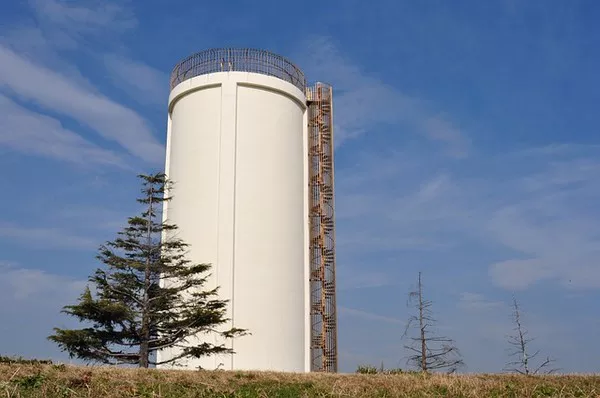A backed-up drain is a frustrating and potentially costly issue that many homeowners encounter. It disrupts daily routines, can lead to water damage, and requires prompt attention to prevent further complications. To effectively address drain backups, it’s crucial to understand the underlying causes. From common culprits to preventive measures, this article explores the diverse factors contributing to drain backups and offers practical solutions.
Common Causes of Drain Backups
Obstructed Pipes: The most typical reason for drain backups is the accumulation of debris, grease, and other materials within the plumbing system. Over time, substances like hair, soap residue, and food particles can build up inside pipes, restricting the flow of water and eventually causing backups.
Tree Root Infiltration: Roots from trees and shrubs seek out moisture and can infiltrate underground sewer lines through small cracks or joints. As roots grow, they can exert enough pressure to break through pipes or cause them to collapse, leading to blockages and backups.
Flushing Inappropriate Items: Many household drain issues stem from flushing items that should not be introduced into the plumbing system. Examples include sanitary products, paper towels, and baby wipes, which can accumulate and create blockages.
Sewer Line Issues: Problems within the main sewer line, such as bellied pipes (sagging sections), offset joints, or collapses due to soil conditions or age, can impede the flow of wastewater. This can cause multiple drains in the house to back up simultaneously.
Improper Installation or Design: Poorly installed or designed plumbing systems may not adequately handle the volume or type of waste produced by households, resulting in recurrent drain problems.
Specific Drainage Areas Prone to Backups
Kitchen Sink: Grease, food scraps, and soap residue are common culprits for kitchen sink backups. Grease, in particular, can solidify and create stubborn clogs over time.
Bathroom Drains: Hair, soap scum, and hygiene products frequently cause blockages in bathroom sinks, showers, and tubs. Toilet backups often occur due to flushing non-flushable items or issues within the sewer line.
Basement and Utility Drains: These drains can be vulnerable to backups caused by sewer line issues or flooding from heavy rainfall or groundwater.
Environmental Factors and Drain Backups
Heavy Rainfall: Intense rainfall can overwhelm sewer systems, especially in older urban areas with combined sewer systems (carrying both sewage and stormwater). This can lead to backups into basements and lower-level drains.
Freezing Temperatures: In colder climates, frozen pipes can result in blockages that cause backups when the pipes thaw.
Signs and Symptoms of Drain Backups
Recognizing the warning signs of drain backups can help homeowners take proactive measures:
Slow Drainage: Water draining slower than usual from sinks, showers, or toilets often indicates an impending blockage.
Gurgling Noises: Unusual sounds emanating from drains, particularly when using other plumbing fixtures, can suggest air trapped in the pipes due to a blockage.
Foul Odors: Sewer-like odors coming from drains or around the house could indicate a backup.
Prevention and Maintenance Tips
To mitigate the risk of drain backups, consider implementing these preventive measures:
Regular Drain Cleaning: Schedule routine drain cleaning to remove buildup before it causes problems. Professional plumbers can use tools like drain snakes or hydro-jetting to clear clogs effectively.
Proper Waste Disposal: Discard grease, oils, and solid waste in the trash rather than down the drain. Install drain strainers or guards to catch hair and debris in sinks and showers.
Tree Maintenance: Regularly inspect trees and shrubs near sewer lines and trim roots that pose a risk of infiltration.
Professional Inspections: Periodic inspections by a licensed plumber can identify potential issues before they lead to backups. This is especially important for older homes with aging plumbing systems.
Protective Plumbing: Install backwater valves or sump pumps where applicable to prevent backups caused by sewer system overflows or flooding.
When to Seek Professional Help
Despite preventive efforts, drain backups may still occur. It’s essential to recognize when professional intervention is necessary:
Persistent Issues: If backups are recurring or affecting multiple drains simultaneously, it may indicate a more severe problem within the sewer system.
Foul Odors and Standing Water: These are signs of potentially hazardous conditions that require immediate attention.
Visible Damage: Cracks, leaks, or signs of water damage around plumbing fixtures suggest underlying issues that should be addressed promptly.
Conclusion
Understanding the causes of drain backups empowers homeowners to take proactive steps in preventing these disruptive and costly incidents. By adopting good maintenance practices, investing in regular inspections, and being vigilant about what goes down the drain, individuals can significantly reduce the likelihood of encountering drain backups. When faced with persistent or severe issues, consulting with a qualified plumber ensures that problems are addressed effectively and comprehensively, safeguarding the integrity and functionality of the home’s plumbing system.


